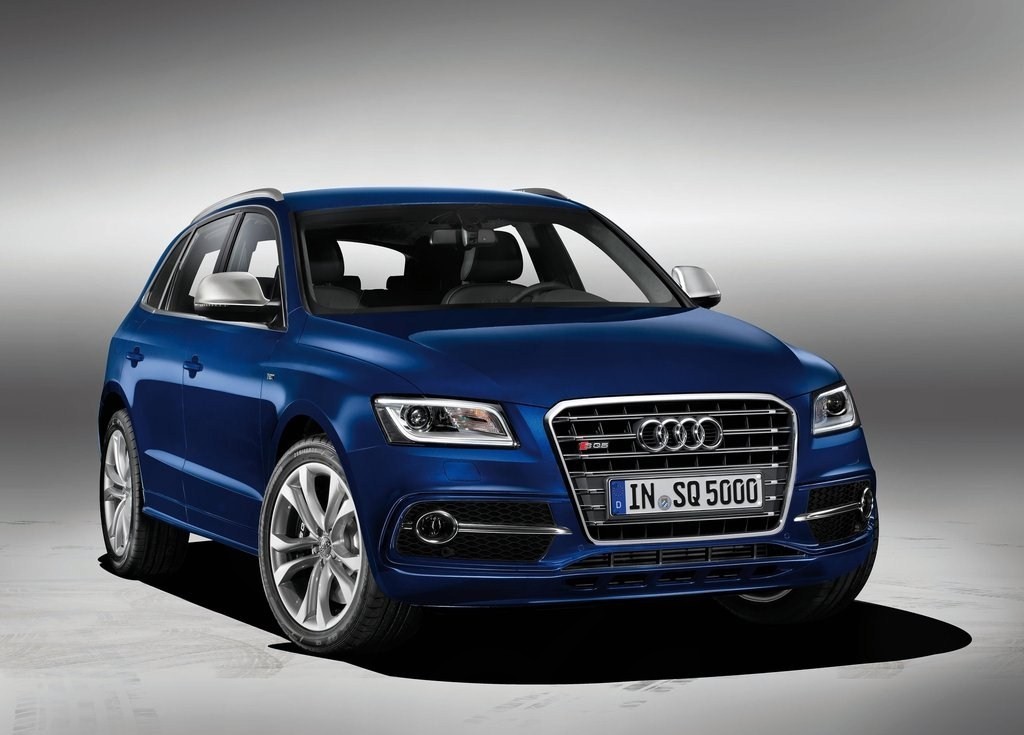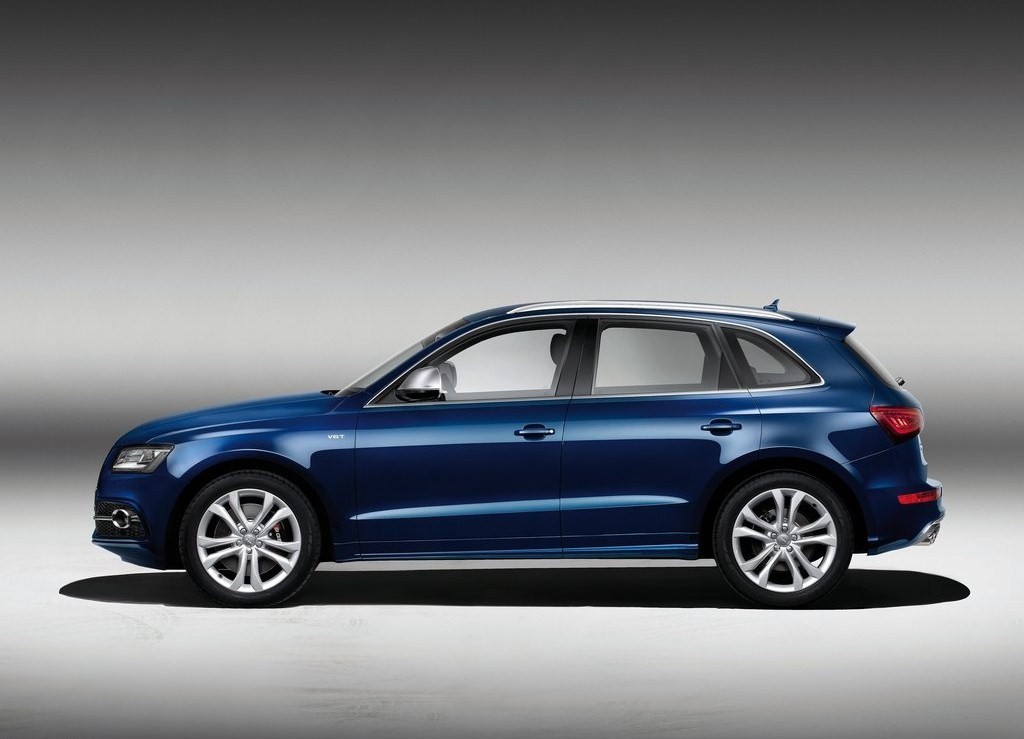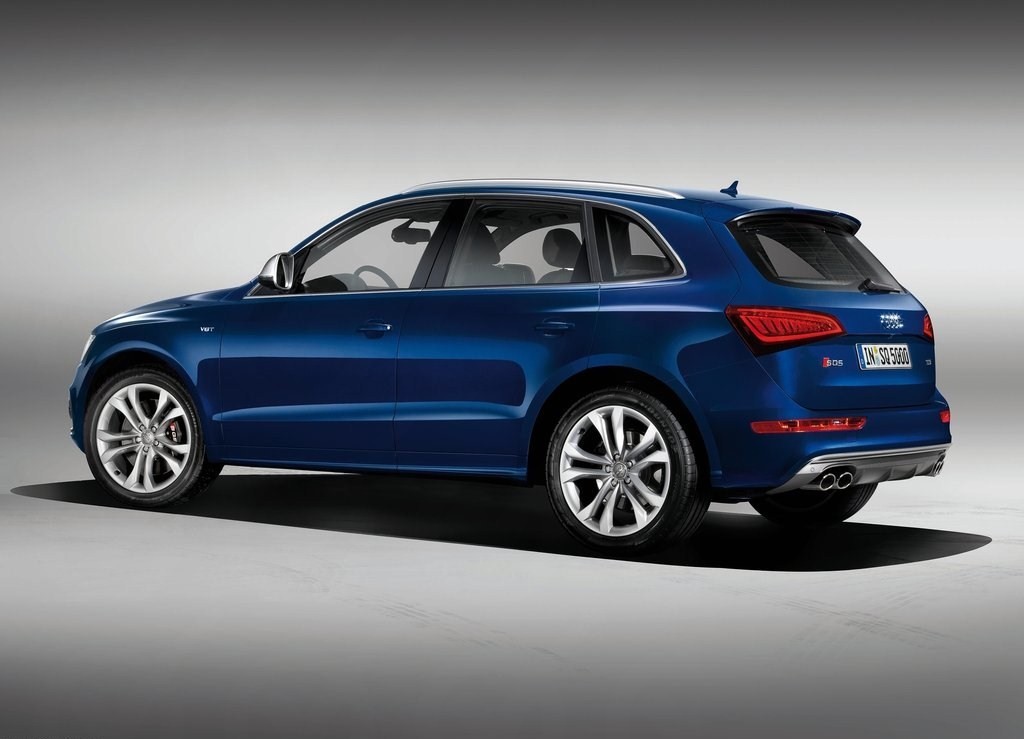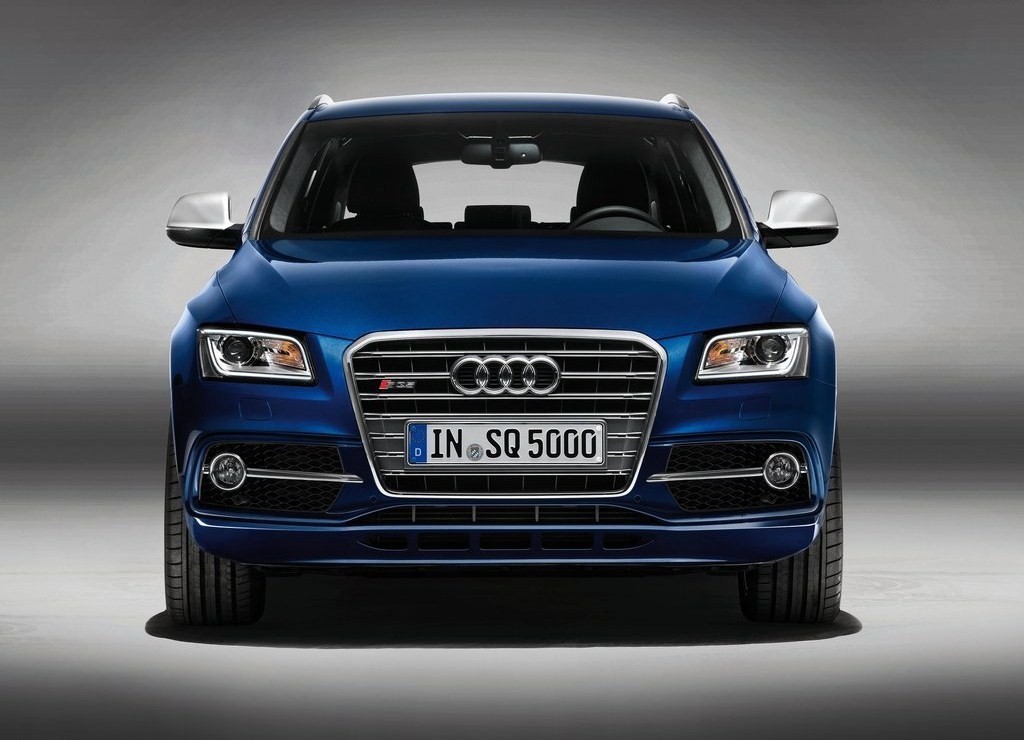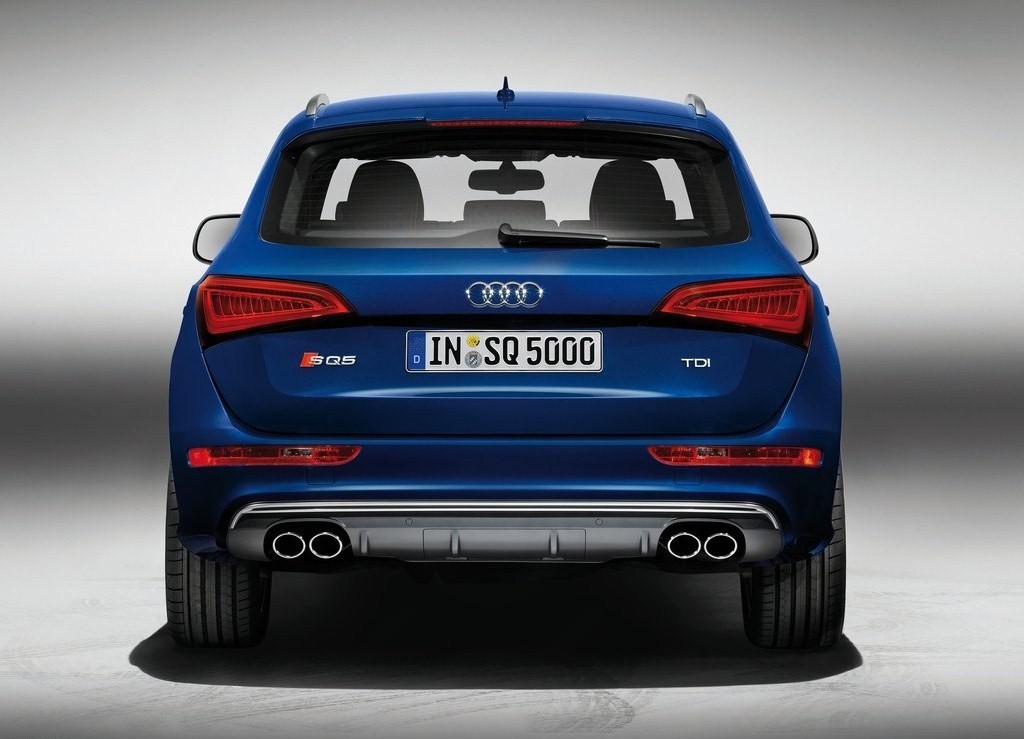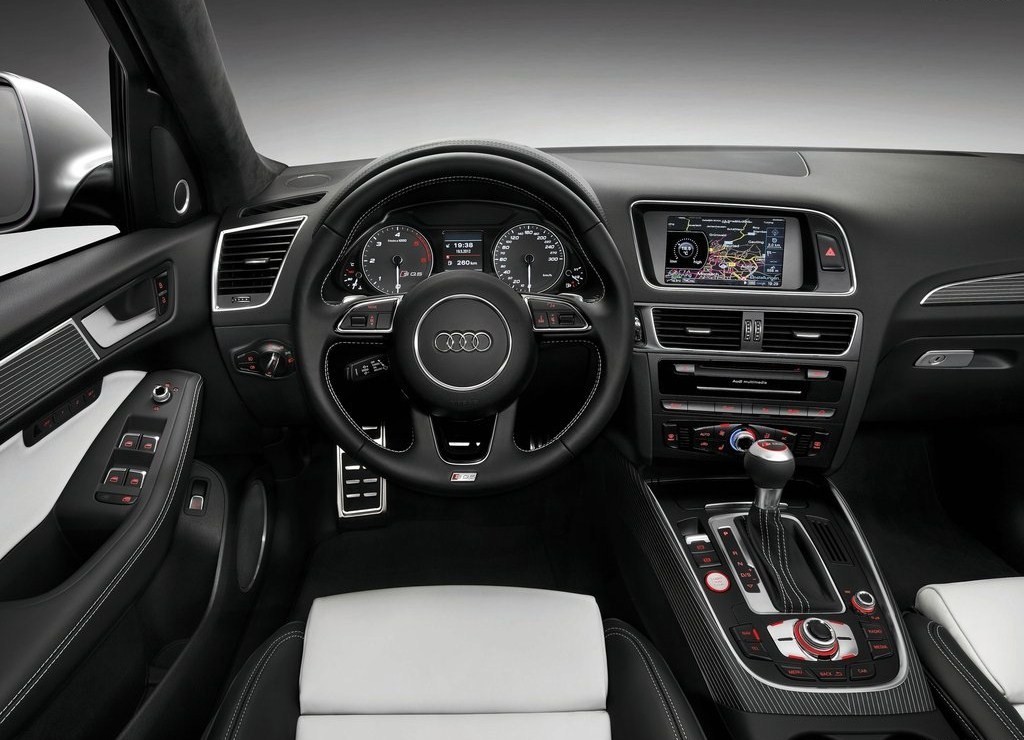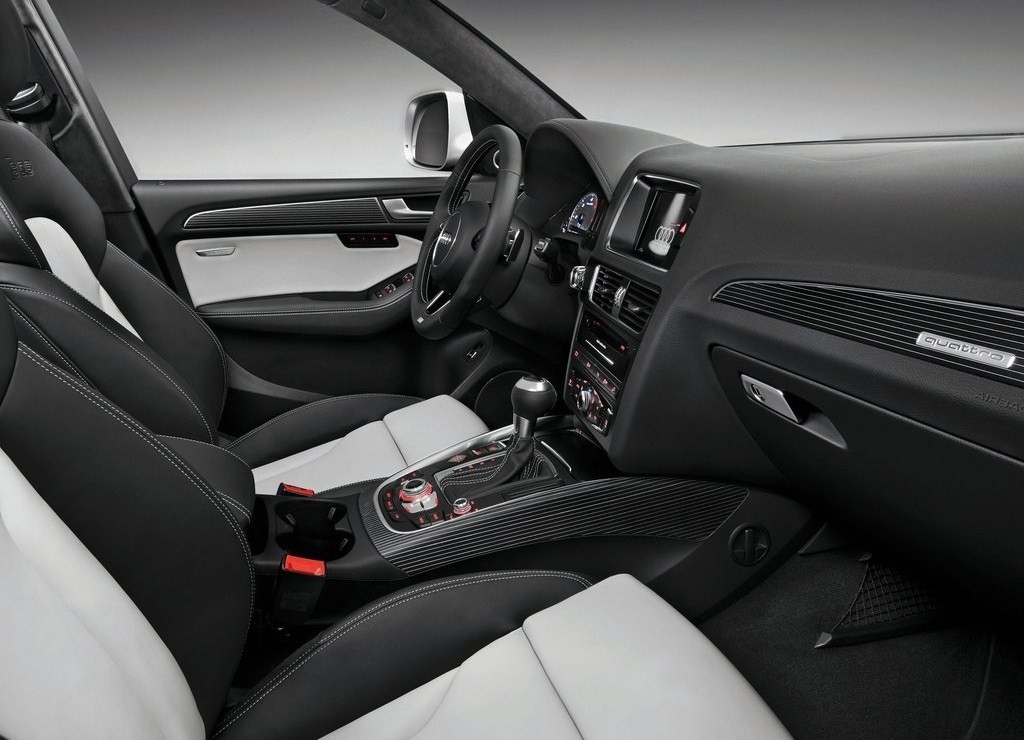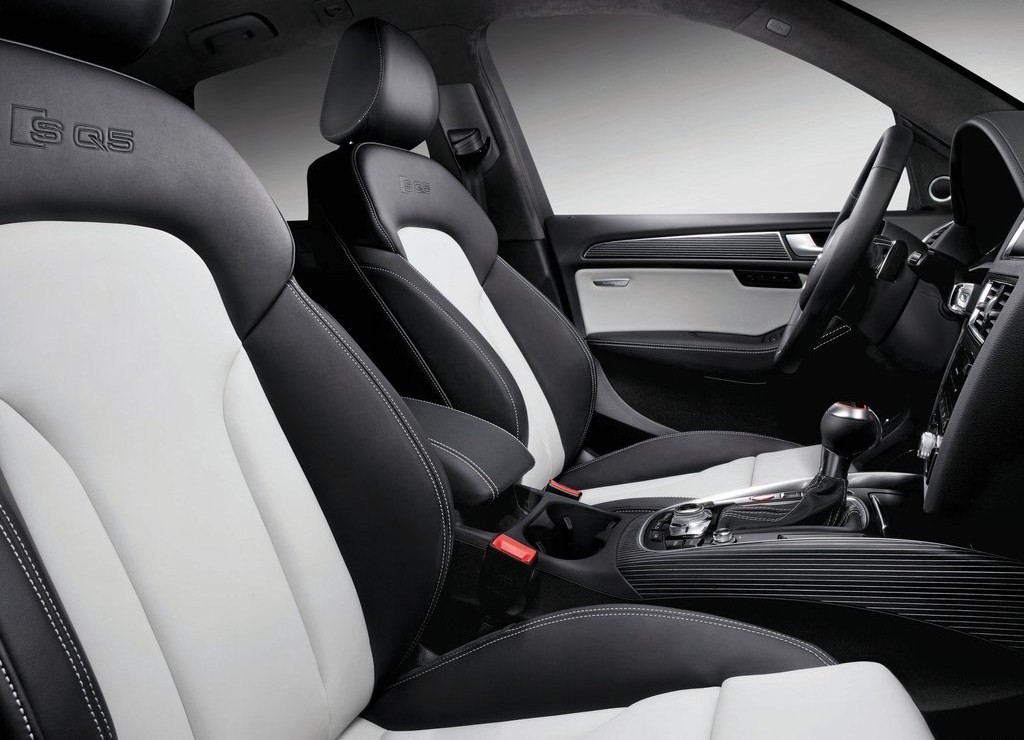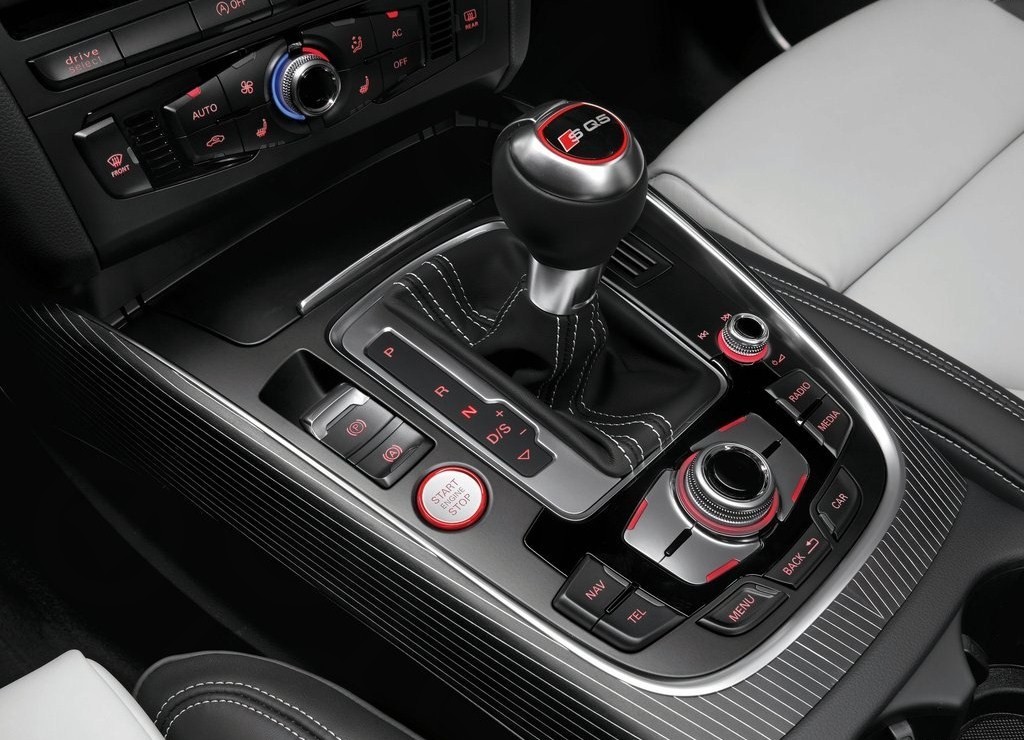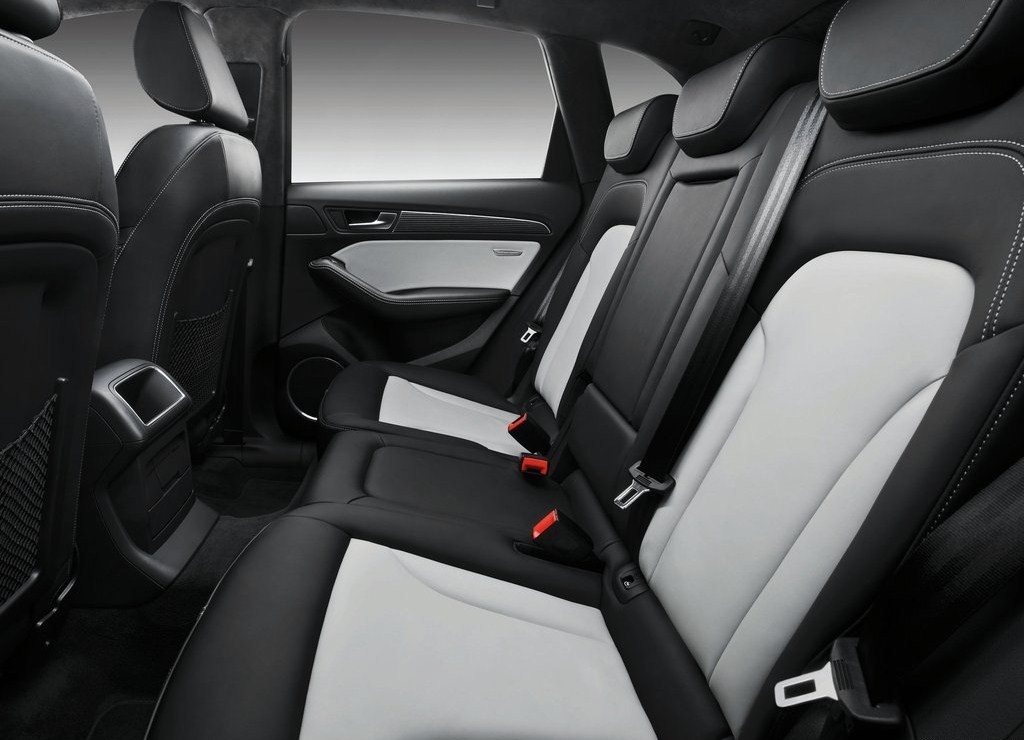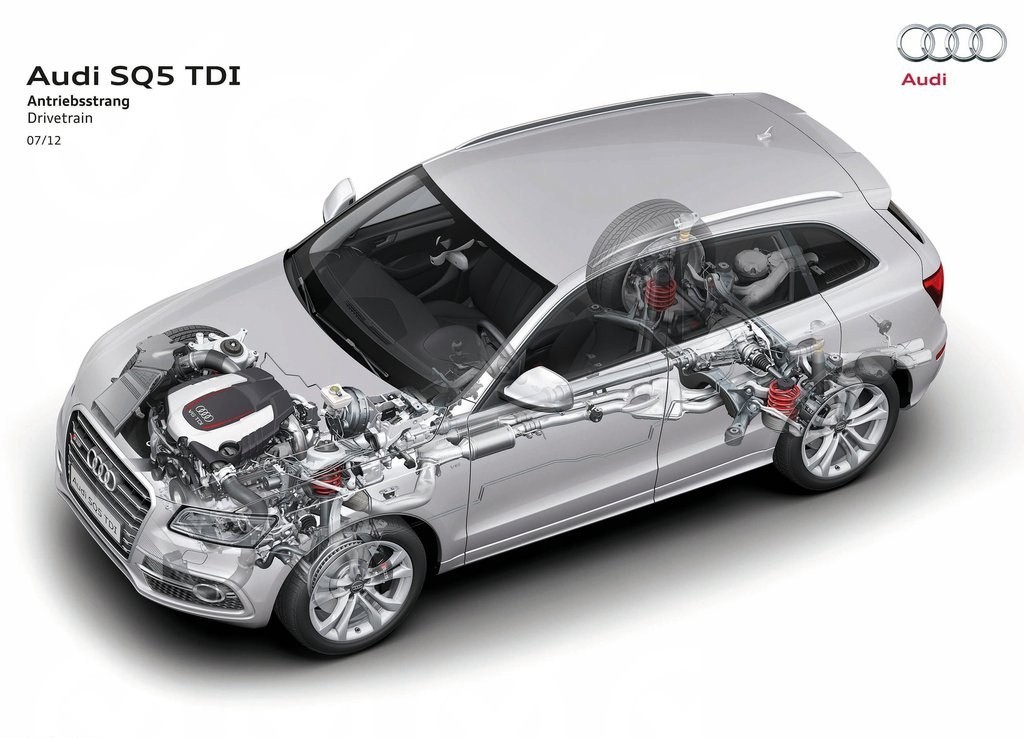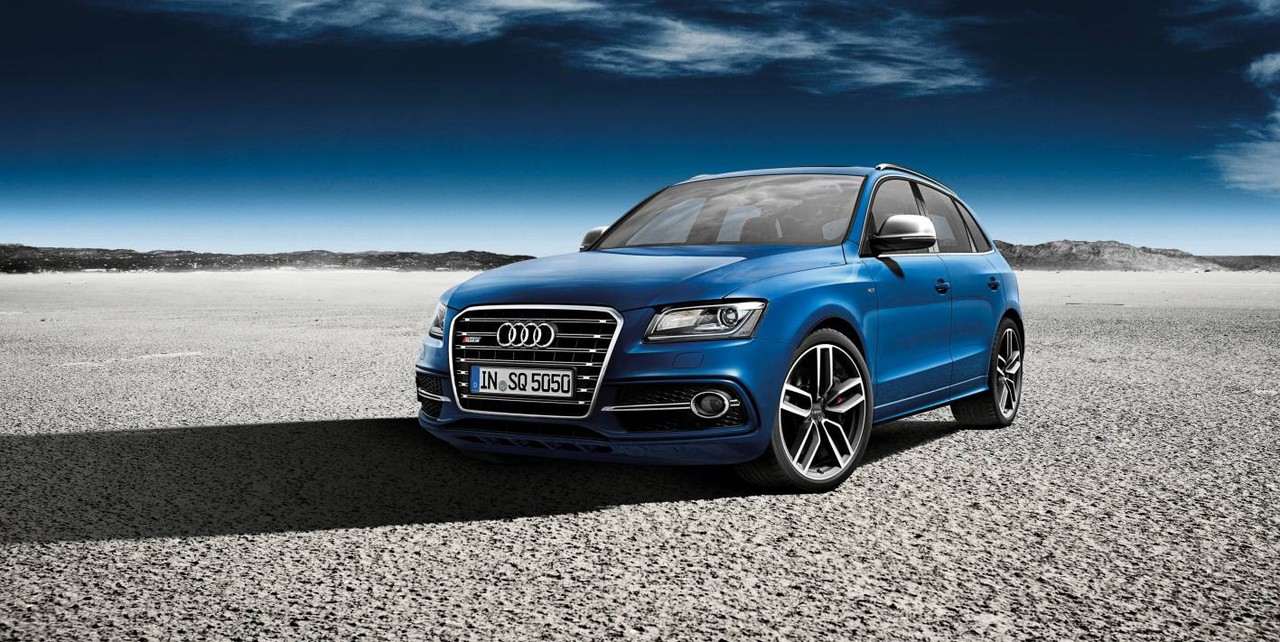
- Powerful and responsive twin-turbo diesel engine
- Refined eight-speed automatic transmission
- Competent dynamics
- Spacious and versatile interior
- Poor ride quality
- Steering lacks feel
Overview
Released in April 2013, the Audi 8R SQ5 was a mid-size, five-seat SUV. Manufactured in Ingolstadt, Germany, the all-wheel drive Audi SQ5 was powered by a 3.0-litre V6 bi-turbo diesel engine that was mated to an eight-speed automatic transmission (see table below).
3.0 BiTDi engine
The 3.0-litre V6 bi-turbo diesel engine had common-rail direct injection (with pressure of up to 2000 bar), double overhead camshafts per cylinder bank, four valves per cylinder and two variable geometry turbines – positioned in series – with the smaller turbine providing boost pressure at low revs and the larger turbine operating from 2500 rpm. As such, the SQ5 could accelerate from rest to 100 km/h in 5.1 seconds. To minimise fuel consumption, the 3.0 BiTDi engine also had an ‘idle stop’ function which enables it to shut down when the vehicle was stationary and ‘regenerative’ braking which regulated the alternator to recharge the battery when the vehicle was braking or coasting.
| Engine | Years | Trans. | Peak power | Peak torque | |
|---|---|---|---|---|---|
| SQ5 | 3.0-litre CGQB twin-turbo diesel V6 | 2013-15 | 8sp auto | 230 kW at 3900-4500 rpm | 650 Nm at 1450-2800 rpm |
| 3.0-litre CVUB twin-turbo diesel V6 | 2015-16 | 8sp auto | 240 kW at 3900-4500 rpm | 650 Nm at 1450-2800 rpm | |
| SQ5 Plus | 3.0-litre DEH twin-turbo diesel V6 | 2016 | 8sp auto | 250 kW at 4100-4300 rpm (265 kW with overboost) |
700 Nm at 1500-2550 rpm |
Dimensions and suspension
Compared to the Audi 8R Q5 on which it was based, the 8R SQ5 was 15 mm longer (at 4644 mm), 13 mm wider (1911 mm), 39 mm lower (1624 mm) and had a 5 mm longer wheelbase (2813 mm). Like the Q5, the SQ5 had five-link front suspension with unequal length wishbones and self-tracking, trapezoidal-link rear suspension.
quattro
The SQ5’s was fitted with Audi’s ‘quattro’ four-wheel drive system. In normal conditions, the quattro system provided a 40:60 front:rear torque split, though the Torsen centre differential could direct up to 65 per cent of the engine’s torque to the front axle and up to 85 per cent to the rear if needed. Furthermore, a ‘torque vectoring’ function could operate to selectively distribute torque between the rear wheels to generate yaw and thereby correct over- or under-steer.
Safety equipment
Standard safety equipment for the Audi SQ5 included dual front airbags, front and rear side airbags, full-length curtain airbags (i.e. for front and rear occupants), ABS, electronic brake force distribution, brake assist, electronic stability control, traction control and front seatbelts with pretensioners and load limiters.
Euro NCAP and ANCAP testing
In Euro NCAP testing , the closely-related 8R Q5 2.0 TDI received a five star safety rating with a 92 per cent adult occupant rating and an 84 per cent child occupant rating. Under the ANCAP’s methodology , this testing resulted in an adult occupant protection rating of 35.21 out of 37.
Features: Audi SQ5
Standard features for Australian-delivered Audi SQ5 models included 20-inch alloy wheels with 255/45 R20 tyres, a ten speaker sound system with a six-channel amplifier, MP3/WMA-compatibility, CD player, auxiliary inputs (3.5 mm/USB/iPod/SDHC card) and Bluetooth mobile phone connectivity, a satellite navigation system with a seven-inch colour screen, three-zone climate control air conditioning, Nappa leather upholstery, power adjustable front seats, cruise control, xenon headlights with daytime LED running lights, front and rear fog lights, automatic headlights, rain-sensing wipers, rear parking sensors, a leather-wrapped steering wheel, remote central locking, power windows and heated mirrors, tilt and telescopic steering wheel adjustment, a 12 volt power outlet, trip computer, an alarm and immobiliser.
SQ5 Launch Edition
When released in Australia, sixty ‘Launch Edition’ SQ5 vehicles were available which featured 21-inch alloy wheels, Bang &Olufsen sound system with digital radio (DAB+), heated front and rear seats, luggage rails, a partition net, ‘Carbon Atlas’ interior inlays, rear privacy glass and an alarm system. The Launch Editions were also fitted with a variable ratio steering system (Audi’s ‘dynamic steering’) which included three selectable modes.
Audi SQ5 Plus
Released in Australia in April 2016, the Audi SQ5 Plus was fitted with the more powerful DEH engine which featured higher injection pressure of 2100 bar, increased boost pressure and a modified engine management system. Furthermore, an overboost function could temporarily increase peak power to 265 kW when the driver floored the accelerator. As standard, the SQ5 Plus was also fitted with an ‘active sport differential’ on the rear axle which could adjust the torque distribution between the rear wheels.
The Audi SQ5 Plus could be identified by its 8.5J x 20-inch matt titanium look alloy wheels with 255/45 R20 Dunlop SP Sport Maxx tyres, aluminium exterior trim, red brake calipers, black high gloss exterior styling package and quad tailpipes in a dual-branch design with chrome clasp. Inside, the SQ5 Plus featured diamond pattern contrast stitching in dark silver and ‘Carbon atlas’ interior inlays.
As standard, the Audi SQ5 Plus was equipped with an ‘Assistance package’ which included:
- Adaptive cruise control (ACC): radar-based cruise control which could maintain a pre-set distance from the car ahead by automatically braking and accelerating the vehicle up to the cruising speed;
- Audi pre sense front with Autonomous Emergency Braking (AEB): where a potential head-16 collision was anticipated, the driver would receive visual and acoustic warnings to apply the brakes, followed by a brief application of the brakes for a jolting effect to alert the driver. If the driver fails to respond, the maximum braking force would be applied to reduce vehicle speed and the severity of the collision; and,
- Audi side assist: used two radar sensors to monitor the area 70 metres behind the vehicle during lane change manoeuvres at speeds over 15 km/h. If there was a vehicle in the driver’s blind spot or an approaching vehicle was detected, the driver would be alerted by a warning LED in the respective door mirror. If the driver activated the turn signal, the LED would flash several times at high frequency.
Related links
- Brochure: Audi 8R SQ5 (September 2012)
- Specifications: Audi 8R SQ5 (August 2014)
- Specifications: Audi 8R SQ5 and SQ5 Plus (April 2016)
